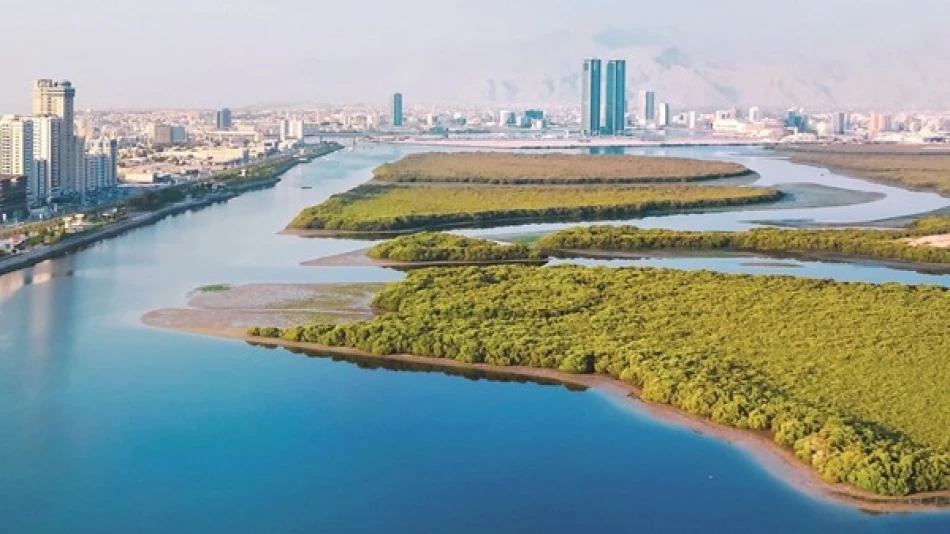
Ras Al Khaimah's Tourism Sector Emerges as the Fastest-Growing in the UAE
Ras Al Khaimah Poaches Former Tourism Australia Chief to Drive Ambitious Visitor Growth Strategy
Ras Al Khaimah has recruited Philippa Harrison, former Managing Director of Tourism Australia, as its new tourism chief executive, signaling the emirate's serious intent to transform itself into a major regional destination. The appointment comes as the northern UAE emirate recorded a striking 650,000 visitors in the first half of 2025 alone, putting it firmly on track toward its ambitious goal of attracting 3.5 million annual visitors by 2030.
Strategic Talent Acquisition Reflects Tourism Ambitions
Harrison's appointment represents more than a standard executive hire—it's a calculated move to import proven international expertise. Her tenure at Tourism Australia, one of the world's most successful destination marketing organizations, brings critical knowledge of scaling tourism operations and managing complex international marketing campaigns.
Sheikh Ahmed bin Saud bin Saqr Al Qasimi, Chairman of the Executive Committee of the Ras Al Khaimah Tourism Development Authority, emphasized that Harrison's "leadership and practical experience, particularly her recent experience with Tourism Australia, gives us complete confidence in her ability to contribute to achieving the emirate's ambitious and strategic goals in the tourism sector."
Australia's Tourism Playbook as Blueprint
Australia's tourism success story offers valuable lessons for Ras Al Khaimah. Under Tourism Australia's guidance, the country has consistently ranked among the world's top destinations, generating over AUD 60 billion annually from international visitors pre-pandemic. Harrison's experience navigating Australia's recovery and repositioning strategies could prove invaluable as Ras Al Khaimah seeks to differentiate itself in the crowded Gulf tourism market.
Sustainable Tourism Focus Sets RAK Apart
The emirate's emphasis on sustainable tourism positions it strategically as global travelers increasingly prioritize environmentally conscious destinations. This approach contrasts with some regional competitors who have focused primarily on luxury and entertainment offerings, potentially giving Ras Al Khaimah a competitive edge among eco-conscious international visitors.
Harrison acknowledged this positioning, stating that "Ras Al Khaimah has established itself as a global success story, and I look forward to contributing to achieving further growth in the coming years."
Market Implications and Regional Competition
The 650,000 visitor milestone in just six months suggests Ras Al Khaimah could potentially exceed its 2030 targets ahead of schedule. This growth trajectory places it in direct competition with established regional hubs like Dubai and Abu Dhabi, while also challenging emerging destinations across the Gulf.
Investment and Infrastructure Readiness
The aggressive visitor targets imply significant infrastructure investments are either planned or underway. Accommodating 3.5 million annual visitors requires substantial hotel capacity, transportation networks, and attraction development—investments that could reshape the emirate's economic landscape beyond tourism.
For hospitality investors and tourism operators, Ras Al Khaimah's trajectory represents a compelling growth opportunity in a market with established infrastructure and government backing, but without the premium pricing pressures of Dubai or Abu Dhabi.
Strategic Timing in Post-Pandemic Recovery
Harrison's appointment comes at a critical juncture as global tourism continues recovering from pandemic disruptions. Her experience managing Tourism Australia through this challenging period—including border closures, travel restrictions, and shifting consumer preferences—provides exactly the crisis management and recovery expertise Ras Al Khaimah needs to capitalize on the current tourism rebound.
The emirate's rapid visitor growth suggests it has successfully positioned itself to capture pent-up travel demand while competitors struggle with capacity constraints or recovery challenges.
 Layla Al Mansoori
Layla Al Mansoori







